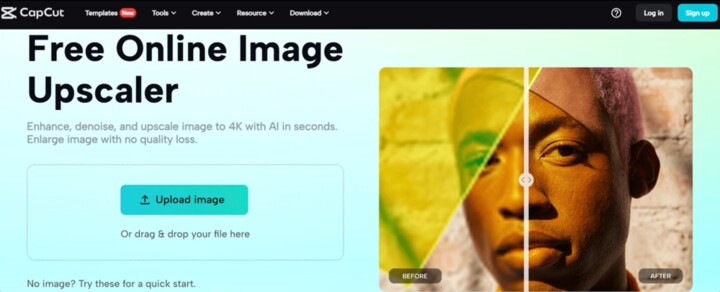The Evolution of AI in Photo Editing
From Basic Algorithms to Creative Revolution
The integration of AI in photo editing has evolved from the early days of digital image processing in the 1960s to sophisticated AI-driven tools today. Beginning with basic algorithms, the field advanced with the development of machine learning models in the late '80s and early '90s, leading to revolutionary changes with deep learning and Convolutional Neural Networks in the early 2010s. This era brought innovations like style transfer and Generative Adversarial Networks, democratizing professional-quality photo editing and opening new creative avenues. The late 2010s and early 2020s have seen further advancements in automation, accessibility, and integration with augmented reality and 3D modeling, while also raising ethical concerns and discussions about regulation. The history of AI in photo editing is marked by technological progression, increasing accessibility, and the emergence of new artistic possibilities with AI assisted image and video enhancement, popular gif maker and advanced digital artwork generation in any style or fashion.

©2023 DCStudio
Why is AI photo editing so popular?
We can mention the 3 pillars of AI in Photo Editing: Automation, Accessibility, and Innovation.
Automation and Efficiency: AI streamlines the photo editing process by automating routine and complex tasks. Whether it's adjusting color balance, removing unwanted objects, or enhancing image quality, AI can execute these functions quickly and accurately, saving both time and effort.
Accessibility and Democratization: With AI-driven tools, professional-level photo editing is no longer restricted to experts. Simplified interfaces powered by underlying AI algorithms allow even novices to create high-quality images, making sophisticated editing techniques accessible to a broader audience.
Enhanced Creativity and Innovation: AI opens up new creative possibilities, such as style transfer, realistic image generation, and 3D modeling. These technologies enable artists and designers to explore novel visual aesthetics and push the boundaries of what's possible in digital imagery, fostering innovation and artistic expression.

©2023 RawPixels
What is an AI image upscaler and how does it work?
An AI image upscaler uses artificial intelligence algorithms to enlarge or "upscale" an image, improving its resolution without a significant loss in quality. Unlike traditional methods, which often result in blurriness, AI models analyze the low-resolution image and predict the details that would exist in a higher-resolution version. They "learn" from extensive datasets to extrapolate additional information from the pixels of the lower-quality image, resulting in an upscaled image with much of the sharpness, clarity, and detail of a high-resolution photograph.
How can AI find the missing pixels when transforming an image to a larger size?
The process includes analyzing existing pixels, recognizing common patterns found in high-resolution images, predicting missing information, and enhancing edges and textures. The AI understands relationships between neighboring pixels and applies known patterns and relationships from its training to predict what the details would likely be in a higher-resolution image. Special attention to edges and textures is vital to maintaining the image's perceived sharpness and detail.
Some advanced AI upscaling methods use iterative processes, gradually enhancing the image in multiple steps. Specialized techniques might even recognize specific objects within the image, like faces or buildings, applying unique upscaling techniques based on the context. This intricate process enables AI image upscalers to generate new pixels that represent a detailed and accurate prediction of what the image would look like at a higher resolution, achieving a quality level that traditional methods often cannot reach.
 ©2023 Capcut
©2023 Capcut
AI technology is bringing so much for image editing
Upscaling images using AI technology brings a significant enhancement in image quality compared to traditional methods. Through sophisticated algorithms, advanced AI upscalers maintain sharpness and detail, providing results close to true high-resolution images, without the usual blurriness or pixelation. They are also efficient, saving time in processing large batches of images, and can be utilized for restoring old or damaged photographs, preserving historical or sentimental value.
Accessibility is another major benefit of AI upscaling, making professional-level image enlargement available to a broad audience. User-friendly interfaces and automated processes allow even non-experts to achieve high-quality results. The technology also supports enhanced creativity, enabling large-scale printing and digital art creation, and it's often available at reasonable prices or even for free, providing a cost-effective solution.
AI upscaling offers additional advantages like context-aware adaptation to different content, integration with other photo editing tools, and consistent, reliable results across various images. This adaptability and consistency are valuable for both individual creative projects and businesses that need to maintain uniformity in visual content. Overall, AI-based image upscaling represents a significant advancement in digital imaging, offering a combination of quality, efficiency, and accessibility.
How difficult is it to use an AI based image editor?
Its not difficult at all! Using an AI upscaler is generally designed with simplicity and ease of use in mind, even for individuals without a technical background. Here's how the process works for the most popular apps:

©2023 Capcut
User-Friendly Interface and accessibility: AI upscalers are provided through applications or web-based platforms with user-friendly interfaces. This means that users typically only need to upload the image they want to upscale and select the desired output resolution or quality settings. As they are accessible online through cloud-based services or in popular photo editing software, they are available to a wide audience without the need for specialized hardware or expertise.
Automated Processing: Once the image and settings are selected, the AI algorithms handle the upscaling process automatically. The user does not need to understand the underlying technology or manually adjust complex parameters.
Preview and Adjustment: AI image upscalers offers previews and simple sliders or other controls to allow users to fine-tune the results. This might include adjusting the level of sharpness, noise reduction, or other aspects to achieve the desired look.
The quality and functionality can vary between different platforms and products. Professionals who require more control and customization might opt for more advanced tools that offer greater flexibility but might have a steeper learning curve.
Sources:


 Jean Dubreil
Jean Dubreil